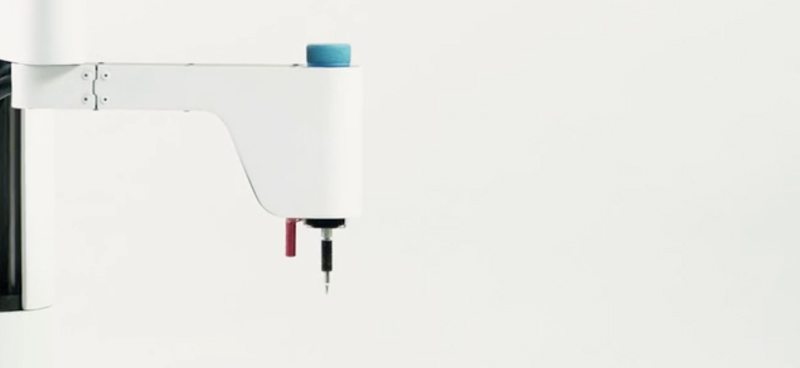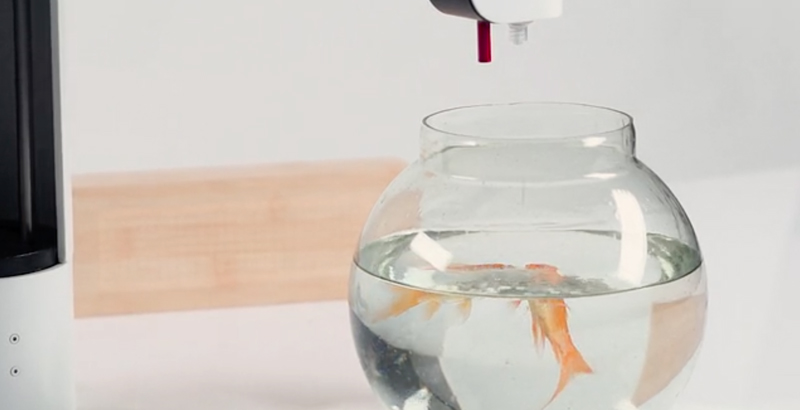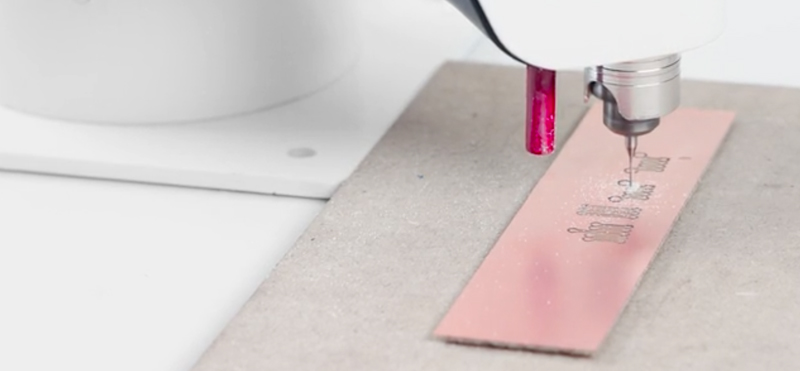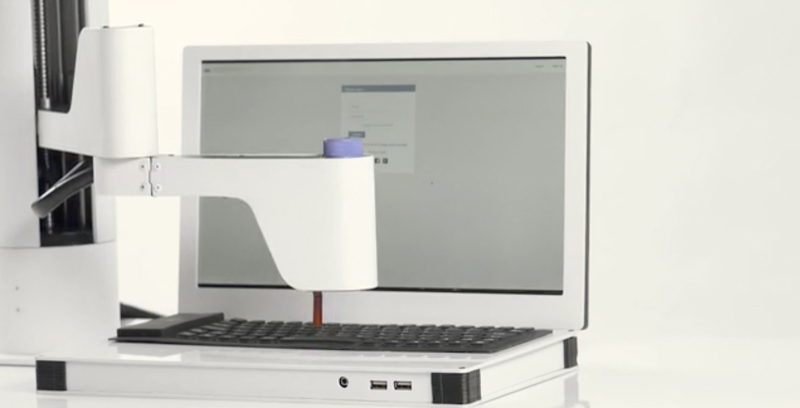Usually, 3D printers available for the average consumer come in a box. But Core 77 reports that entrepreneur Zaib Husain and engineer Azam Shahani have come up with a prototype called Makerarm that goes against the boxed expectation.
Their device has an arm with a 180-degree sweep and 10 inches of Z-travel, cantilevered on a column that mounts to a work surface. The arm can reach up to 16 inches.
But calling the device a desktop 3D printer will be an understatement. In the project’s Kickstarter video, we learn that Makerarm can solder, level, carve, etch, cut sheets, engrave plastic and leather, carve wood, and even feed your fish, to name a few. Perhaps the icing on the cake is Makerarm’s ability to, well, put icing on cake.
The plethora of activities is thanks to changeable tool heads that can be fastened to the arm, such as a screw fastening head, laser engraving head, 3D printing head, and foam cutting head.
The creators argue that Makerarm can be a solution to creators that don’t have a lot of access to every tool, machine, or material that is too expensive, and instead have them all in one desktop robotic arm.
So far, the project has raised $197,229 of its $349,750 goal with the help of 181 backers, and it has 22 days to go.


Related Stories
| Nov 16, 2010
Calculating office building performance? Yep, there’s an app for that
123 Zero build is a free tool for calculating the performance of a market-ready carbon-neutral office building design. The app estimates the discounted payback for constructing a zero emissions office building in any U.S. location, including the investment needed for photovoltaics to offset annual carbon emissions, payback calculations, estimated first costs for a highly energy efficient building, photovoltaic costs, discount rates, and user-specified fuel escalation rates.
| Nov 9, 2010
12 incredible objects being made with 3D printers today
BD+C has reported on how 3D printers are attracting the attention of AEC firms. Now you can see how other creative types are utilizing this fascinating printing technology. Among the printed items: King Tut’s remains, designer shoes, and the world’s smallest Rubik’s Cube.
| Nov 5, 2010
New Millennium’s Gary Heasley on BIM, LEED, and the nonresidential market
Gary Heasley, president of New Millennium Building Systems, Fort Wayne, Ind., and EVP of its parent company, Steel Dynamics, Inc., tells BD+C’s Robert Cassidy about the Steel Joist Manufacturer’s westward expansion, its push to create BIM tools for its products, LEED, and the outlook for the nonresidential construction market.
| Nov 2, 2010
Energy Analysis No Longer a Luxury
Back in the halcyon days of 2006, energy analysis of building design and performance was a luxury. Sure, many forward-thinking AEC firms ran their designs through services such as Autodesk’s Green Building Studio and IES’s Virtual Environment, and some facility managers used Honeywell’s Energy Manager and other monitoring software. Today, however, knowing exactly how much energy your building will produce and use is survival of the fittest as energy costs and green design requirements demand precision.
| Oct 13, 2010
Test run on the HP Z200 SFF Good Value in a Small Package
Contributing Editor Jeff Yoders tests a new small-form factor, workstation-class desktop in Hewlett-Packard’s line that combines performance of its minitower machine with a smaller chassis and a lower price.
| Oct 13, 2010
Prefab Trailblazer
The $137 million, 12-story, 500,000-sf Miami Valley Hospital cardiac center, Dayton, Ohio, is the first major hospital project in the U.S. to have made extensive use of prefabricated components in its design and construction.















